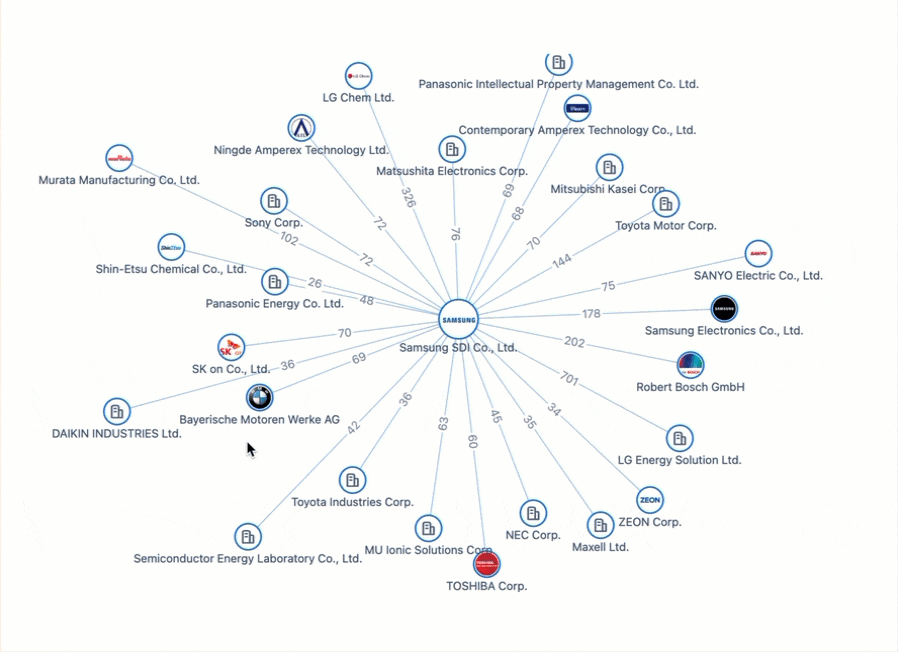Green Cosmetics: What Lies Ahead of This Exciting Field of Innovation?
In 2021, the natural and organic beauty industry was valued at $29.92 billion. In the coming years, this valuation is expected to increase exponentially in conjunction with consumer demand for eco-friendly products.
In this article, we’ll look at what green cosmetics are, the latest trends, and what they mean for the future of the industry.
Let’s get started!
Green Cosmetics: An Overview
Green cosmetics is the area of health and skincare focused on environmentally friendly products. Recent decades ignited growing interest in preserving the environment, with skincare and makeup one of many industries seeing plenty of innovation. Consumers are increasingly showing a desire to use products with minimal damage to the environment, especially when it comes to items that come in direct contact with their skin.
And, most recently, the COVID-19 pandemic lockdowns changed self-perceptions about what body beauty means: internal and external well-being are linked and of importance to each other.
Green Cosmetics vs. Clean Beauty: What’s the Difference?
A common phrase in the green cosmetics market is “clean beauty,” which is sometimes interchangeably used. However, while they share similarities, there are differences between them.
Products marketed as clean beauty mean that the contents are considered safe and non-toxic, such as foregoing potentially harmful ingredients like parabens or formaldehyde. Whereas those marketed as green are designed to be eco-friendly. Green products typically contain vegan, hormone-free ingredients and they are generally not tested on animals. Many green products also utilize recycled or biodegradable packaging.
From an analytical perspective in doing a patent search, we can see that green cosmetics is a much newer industry than clean beauty. Figure 1 shows the patent application and issue trends from 2003 to present time. Green cosmetics has less than 100 patents whereas clean beauty has 15.6K.

How Are Green Cosmetics Different from Regular Cosmetics?
Green cosmetics share some overlap with regular cosmetics in that they’re both used to clean, improve, or change physical appearance (such as skin, hair, nails, or teeth). However, unlike regular cosmetics which use synthetic compounds and chemicals (some of which may be toxic), green cosmetics are derived from natural, non-toxic ingredients.
Green Cosmetics: A Deep Dive
It’s no secret that what we put into and on our bodies has a direct impact on our health and wellbeing. As such, it isn’t surprising that modern consumers are demanding more from the cosmetics industry. There has been a shift toward environmentally friendly products that are good for people and the planet.
In this section, we’ll explore the key players in the green cosmetics industry and how they’re shaping the future of this promising sector.
Who’s Currently Ruling the Landscape?
In our recent analytical report on green cosmetics , we saw that the company with the greatest number of patents filed in the green cosmetics category, Amorepacific Corporation, held more patents than the next five companies combined. This suggests that green cosmetics is still gaining traction and becoming an increasingly strategic decision.
This has us wondering: what is it about this industry that allows new entrants versus established innovators to dominate?
Looking at Figure 2, we can see where patents filed in the green cosmetics category start to sharply rise as compared with previous years. The company filing the most patents, Amorepacific, showed filing activity dating back to 2003. But the next nine companies only started matching the pace in 2015, greatly weighting the scales towards new entrants versus established innovators.

And then just four years later, the COVID-19 pandemic arrived and drastically changed self-care routines and purchasing habits. The article “Eco-friendly masks preferences during COVID-19 pandemic in Indonesia” explores the rise of biodegradable masks, and why they’re now a preferred option.
Further evidence supports the growth of green cosmetics in the green movement. The article “Food Loss and Food Waste for Green Cosmetics and Medical Devices for a Cleaner Planet” shows a clear link between food waste and biodegradable and natural-based products and packaging materials, with organic and natural cosmetics staking an increasingly growing share of the revenue stream.
These are just a few examples of many. And the research is clear — consumers want green products, especially in a post-pandemic world.
It’s More Common Than You Think
With sustainability a top focus for green cosmetics, there are many tangible and real-life benefits. These include:
- Environmental health: By focusing on environmentally sustainable practices, green cosmetics can help preserve the planet’s health. For example, the brand Burt’s Bees has a green philosophy of “Because we take from nature, we must work to preserve and protect it,” and a practice of 50% recycled materials on average used across packaging; 99.5% natural origin average across their product portfolio; and 45% of oils, waxes, and butters were bought directly and traced to the origins and then verified with on-site visits.
- Safer personal health: Opting for green cosmetics leads to an overall lower cumulative effect of estimated daily intake of parabens than with conventional products.
- Reducing food loss and waste: As discussed above, the article in Cosmetics showed how food loss and waste can be offset by incorporating it into green cosmetics, creating a mutually beneficial mini-ecosystem.
- Diversified intellectual property (IP) portfolio: Because this market is growing exponentially, companies that innovate in this industry can easily diversify their IP portfolio and stay ahead of the curve.
Green Cosmetics: The Future
Current trends show the industry is dominated with rising entrants, as opposed to established names. As detailed in our report, this suggests the market is on an upward trajectory and hasn’t yet peaked, leaving plenty of room open for research and development (R&D) for new players.
Key and Emerging Players
Earlier on, we saw that Amorepacific was the lead filer of patents in the green cosmetics category. Not only is it the top filer, but it also holds more patents (93) than the next five combined (73). Additionally, the company has consistently filed green cosmetics patents since 2003, while the other top nine companies arrived on scene around 2015.
Figure 3 below showcases the other four companies with a large share of the spotlight. Interestingly, these companies all have more than 15 simple family (collection of documents that cover a single invention) patent documents.

As green cosmetics gains popularity, we can expect to see the number of new entrants increasing, and the more established innovators cementing their patents and statuses. In time, both sides should even out until the market reaches saturation, and then the established innovators are likely to take over from new entrants.
Conclusion
While the cosmetics industry has been around for thousands of years, green cosmetics is still a relatively new concept. With climate change and personal health and wellbeing becoming an undeniably important part of life, consumers are shifting their attention toward green cosmetics.
As Newtonian physics teaches — an object in motion stays in motion unless an imbalanced force acts upon it, as such we expect to see the current trend of upwards growth in this industry to continue propelling forward.
If you’re interested in taking a deeper dive into this industry, download our analytical report on green cosmetics.
Explore the trends shaping the future of Green Cosmetics.
Your recommended content
-

Patsnap Surpasses US$100 Million in Annual Recurring Revenue
Category: Article | Category: News/PR
Wednesday, June 12, 2024
Patsnap has reached a significant milestone of achieving $100M in Annual Recurring Revenue (ARR), marking an impressive 20% year-over-year growth in 2023. This milestone highlights the massive and meaningful value our platform brings to over 12,000 IP and R&D teams across 50 countries, driving efficiency, productivity, and collaboration.
-

Introducing Hiro, an AI assistant built for IP and R&D workflows
Category: AI advancements | Category: AI development | Category: AI-tools | Category: Article | Category: artificial intelligence
Tuesday, May 14, 2024
Powered by Patsnap’s industry-specific LLM, Hiro is designed to streamline IP and R&D workflows from ideation to product launch. With its robust AI capabilities, Hiro brings a new level of efficiency, precision, and security to tasks that were once time-consuming and labor-intensive.What sets Hiro apart is that it draws from our large language model that’s been trained on market-leading patent records, academic papers, and proprietary innovation data. This ensures we deliver more accurate and reliable results for every prompt.
-

Powering the Future of Electric Vehicles: The Battle for Battery Innovation and Patents
Category: Article | Category: battery technology | Category: electric vehicle | Category: EV | Category: lithium ion | Category: lithium ion battery | Category: NEV | Category: new energy vehicles
Monday, April 22, 2024
In the ever-evolving landscape of innovation, the electric vehicle (EV) industry stands as a beacon of technological transformation. As we explore the patents propelling the EV revolution, Apple's venture serves as a poignant example of the challenges even industry giants face in this competitive arena. Join us on a journey through the global patent landscape, where the quest for superior power solutions unfolds, and where the true pioneers of the EV revolution are making their mark.